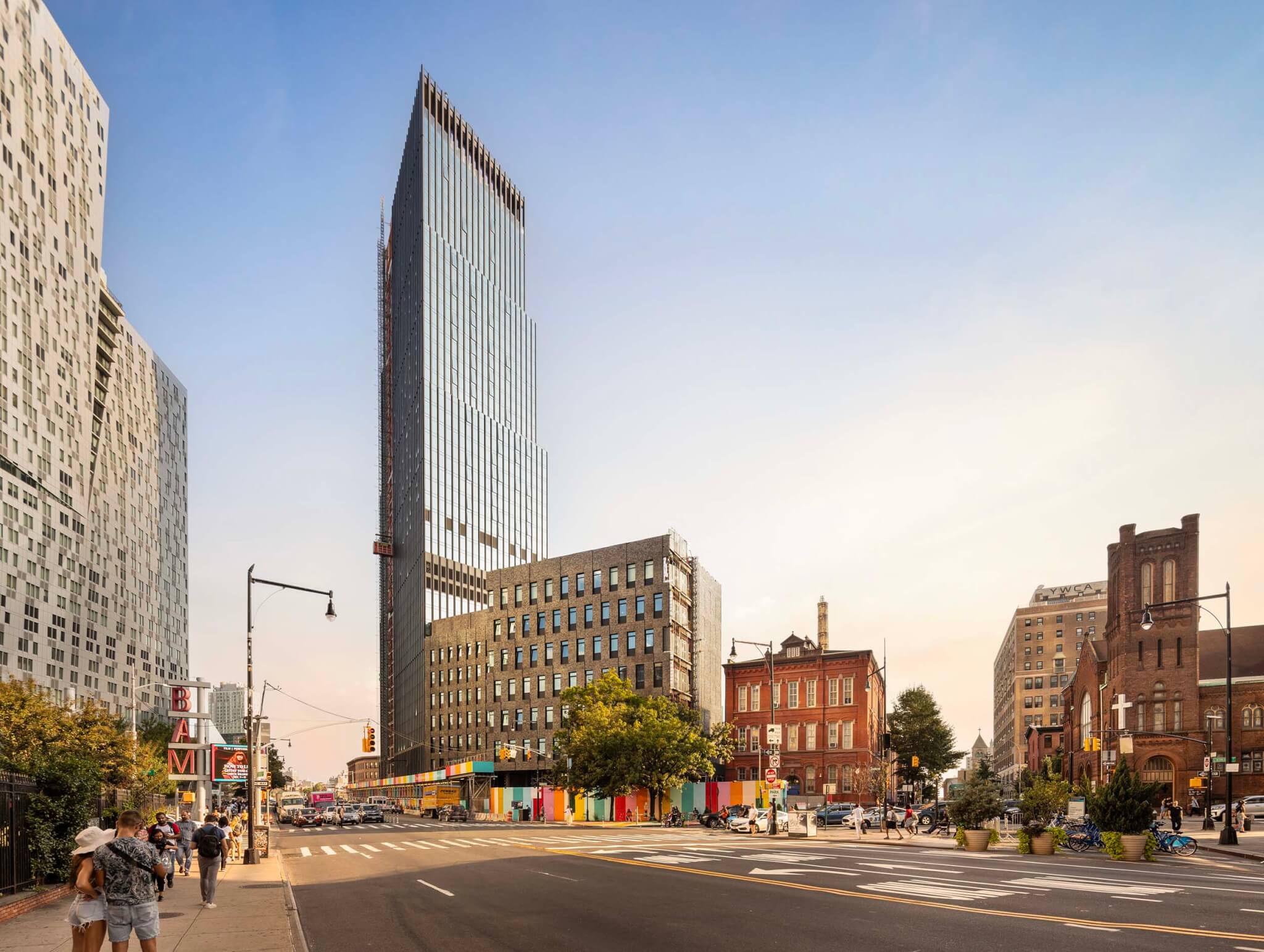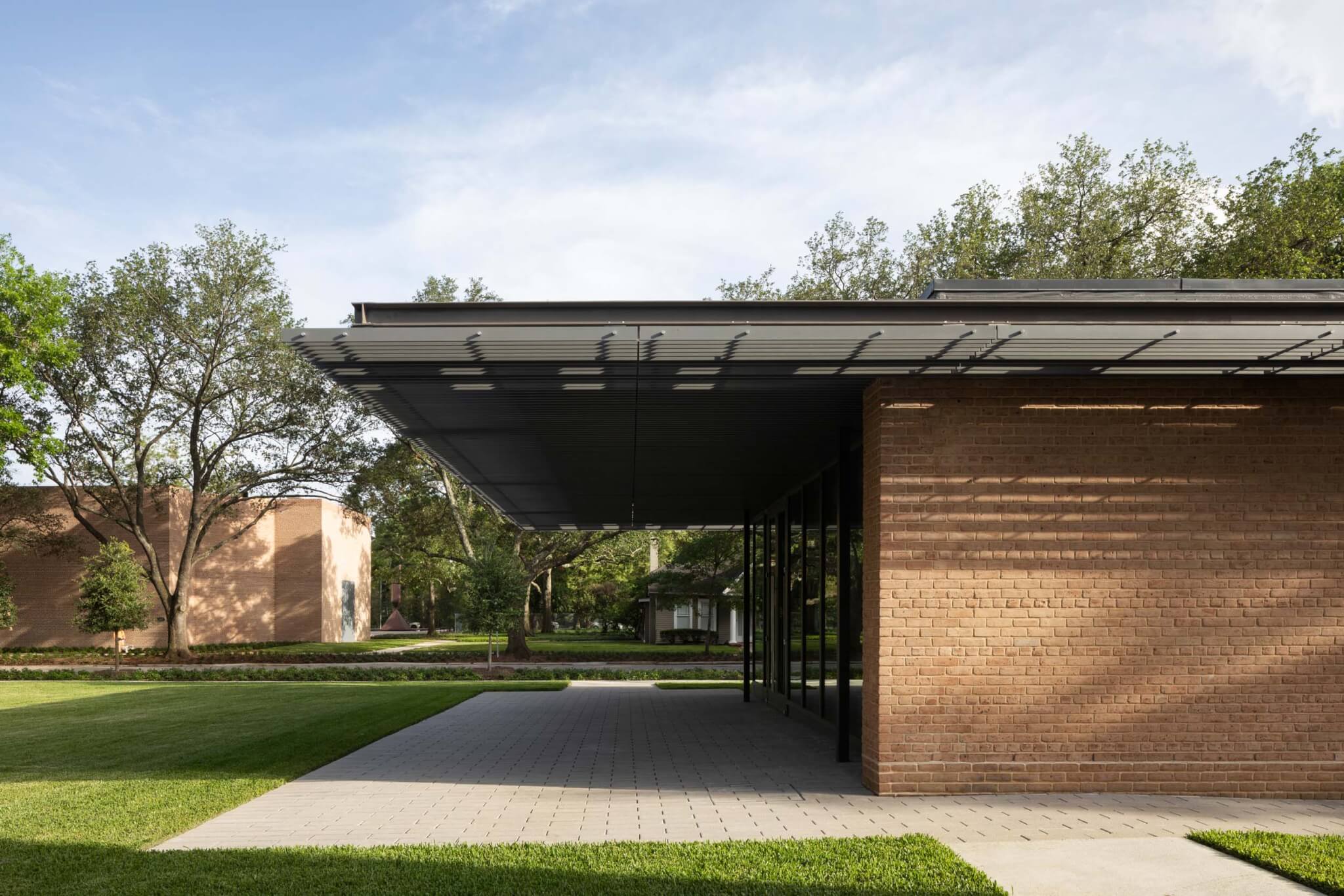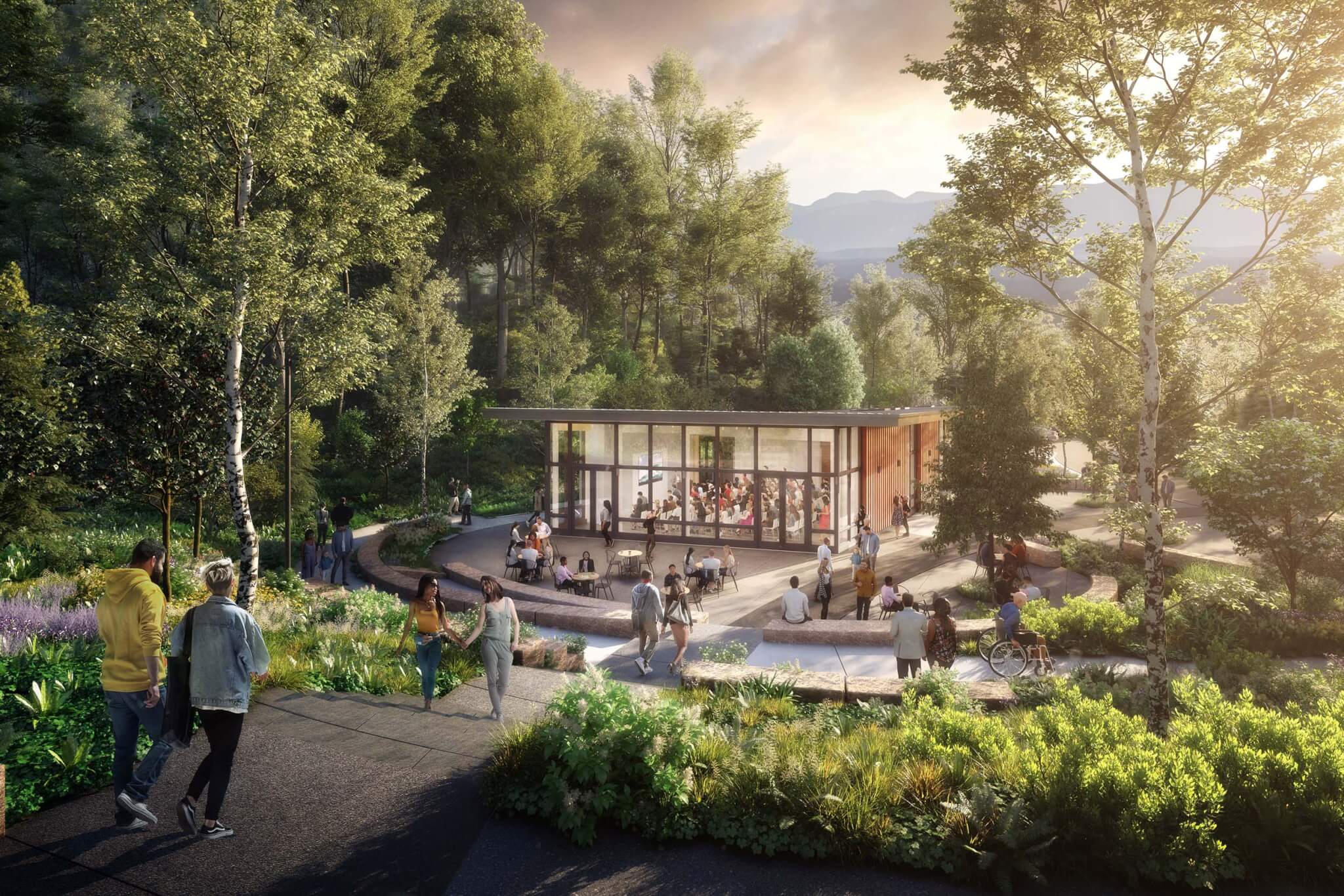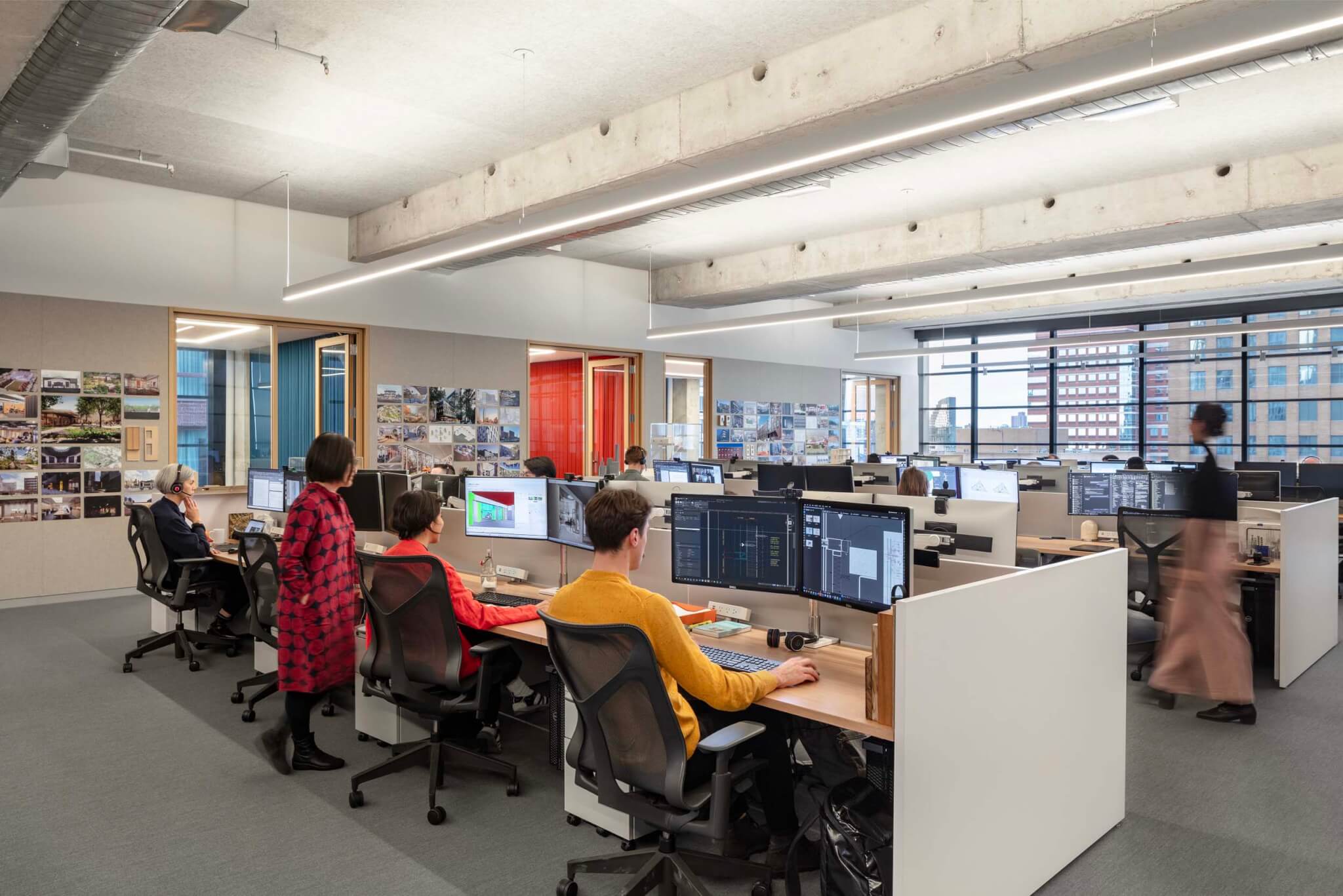It turns out that Architecture Research Office (ARO) is an apt name for a firm dedicated to curiosity. In 1993, cofounders Adam Yarinsky and Stephen Cassell came together to create a place where they could continually learn through work. This year, the duo, along with principal Kim Yao, has marked the nearly 40-person firm’s 30th anniversary with a relocation to a new Brooklyn office.
“When we first started the firm, an empirical methodology initially was directed toward form and materials,” Yarinsky told AN. The firm’s ten-year partnership with acoustic textile brand FilzFelt, on display in the new office, is part and parcel of this. The collaboration began when the two first worked on Knoll’s New York flagship showroom and has since blossomed into an ongoing exploration of architectural materials.
Over the years, that inquiry has evolved beyond textiles into the realm of relationships between people, organizations, companies, and institutions—and the ways architecture can facilitate this dynamic. ARO’s research rightly begins at home, where the practice’s collaborative process affords it a flat, nonhierarchical operation. One actionable example of this is the firm’s requirement that two principals lead every project to ensure multiple points of view.
“We shifted to having weekly office meetings every Monday morning and social initiatives within the office, making sure that everyone feels that they have agency,” shared Cassell. Some of these initiatives include the Social Equity Group, which holds the firm’s diversity and antiracist practices to account by ensuring representation and social responsibility within projects; a Zero-Waste Team to minimize office waste; and even the team project Pumpkitecture, an annual New York architecture competition for pumpkin carving.
“The community of the office is a project itself,” continued Cassell. Through it, research becomes praxis, the running theme uniting the firm’s many scales and typologies.
ARO Office 2023
Occupying a loftlike floor of an industrial building in downtown Brooklyn, the firm’s office embodies ARO’s process. Office-wide design sessions informed the 6,500-square-foot workplace, resulting in an open, inviting floorplan that breaks off into informal and formal places to gather. Generous daylight and colorful materials soften the concrete. Not only is the office a reflection of ARO’s collaborative methodology, it’s also a testament to how the firm investigates space as it relates to relationships. “We made very specific strategic decisions about supporting the way we want to be interacting,” said Yao. “They’re really simple choices, but each one thoughtfully engages with how we want to support our process.” Integral to this is physical model-making, evidenced by the office’s model shop, which, of course, falls alongside the research-forward material and book libraries.

100 Flatbush 2016–
Part of Alloy Block, a mixed-used, five-building development in downtown Brooklyn by Alloy Development, the 100 Flatbush project comprises two ultra-low-energy schools: a public primary school, P. S. 486, and Khalil Gibran International Academy, the city’s sole Arabic language public high school. Designed to meet Local Law 97’s energy efficiency requirements, the two are the city’s first Passive House–certified public schools. Social context drives the design. “We decided the high school entrance is off Flatbush. It reads as a civic building on Flatbush Avenue so that kids are proud of where they go to school,” Cassell shared. “They can feel a sense of belonging and ownership.” A brick facade and rhythmic windows bolster this sense of dignity. The primary school entrance is located on the other side, where the street faces Cobble Hill. Lower massing situates the school within the brownstone vernacular and offers a quieter, safer entrance for little ones. Navigating the civic and residential scales, as well as a below-grade gymnasium, the 146,000-square-foot project expertly balances rigorous requirements.

Rothko Chapel 2016—
First completed in 1971, Houston’s Rothko Chapel remains an artistic and architectural icon, designed collaboratively by abstract expressionist Mark Rothko alongside Howard Barnstone and Eugene Aubry. ARO completed phase I, the restoration of the chapel, in 2020, and construction of phase II begins this spring. It entails creating a campus for a new administration building, program center, and outdoor space, realized in collaboration with Nelson Byrd Woltz. For ARO, it was important that buildings visually and physically engage the neighborhood. To that end, brick and glass facades unite with the chapel, while scale and massing echo the early-20th-century vernacular that surrounds it. “So much of our work involves engaging existing historic buildings or older structures and renewing them through adaptive renovations. This one encompasses the existing building but then also the neighborhood around it,” said Yarinsky. It’s another project informed by ARO’s meticulous deep dive into how buildings affect locals, visitors, and history.

Frederic Church Center for Art & Landscape 2017–
Landscape artist Frederic Church built Olana, his 250-acre Persian-style home, studio, and garden in 19th-century Hudson, New York. Though the site has been open to the public since the state purchased the property in 1966, the new visitor center, part of Nelson Byrd Woltz’s design plan, realizes a more immersive visitor experience. For the 4,500-square-foot, all-electric center, ARO approached the design by merging indoors and outdoors through numerous skylights and a wall of windows that opens onto a terrace. Sustainability was also important to honor Church’s stewardship of the land. As such, ARO designed the mass timber center to reduce its carbon footprint with glue-laminated wood columns and cross-laminated timber roof panels—a first for a public building in New York. Currently under construction, the center integrates ticketing, restrooms, a cafe and restaurant, and a multipurpose room. All design interventions ensure that the center situates itself conceptually and aesthetically into the landscape.

